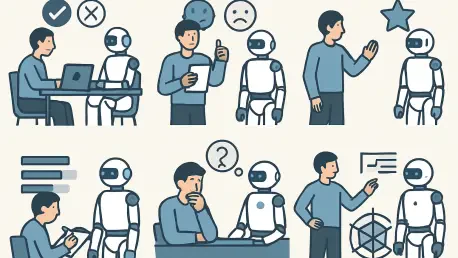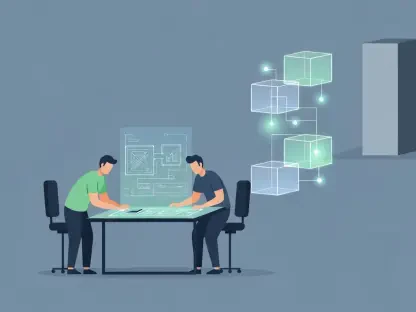As generative AI continues to reshape the tech landscape, ensuring the reliability of large language models (LLMs) has become a critical challenge for developers and engineers. Today, we’re thrilled to sit down with Vijay Raina, a renowned expert in enterprise SaaS technology and software architecture. With his deep insights into cutting-edge tools and thought leadership in system design, Vijay offers a unique perspective on the evolving world of AI evaluation. In this conversation, we dive into the complexities of trusting AI systems, the innovative yet controversial approach of using LLMs to judge other LLMs, the role of human oversight, and the future of scalable evaluation methods in a rapidly changing digital environment.
How do you see the growing use of generative AI impacting trust among developers, and what factors are contributing to this shift?
It’s fascinating to see how quickly generative AI has been adopted, but with that comes a noticeable dip in trust among developers. As more people use these tools, they’re encountering issues like hallucinations, where the AI generates inaccurate or fabricated information, and outputs that don’t align with the intended prompt. There’s also concern around sensitive data, like personally identifiable information slipping through. Developers are realizing they can’t just take an LLM’s output at face value, which is pushing engineering teams to prioritize building more robust validation mechanisms into their systems. It’s a natural evolution—familiarity breeds a demand for accountability.
What are the key advantages of using one LLM to evaluate another, often referred to as the ‘LLM-as-a-judge’ approach?
The biggest advantage of the LLM-as-a-judge approach is scalability. Human evaluation, while ideal, just isn’t feasible at the volume of content generative AI produces. An LLM judge can process thousands of outputs in a fraction of the time, often aligning closely with human judgment because these models are trained on vast amounts of human-generated text. This method is particularly useful for catching basic errors or flagging problematic content like toxicity or bias before it reaches end users. It’s not perfect, but it’s a practical way to manage quality control in real-time applications.
What challenges or risks come with relying on an LLM to assess another LLM’s output, and how might these impact the evaluation process?
The risks are significant, and the phrase ‘fox guarding the henhouse’ captures it well. One major issue is inherent bias—LLM judges often favor longer, wordier responses or default to selecting the first option presented, which doesn’t always mean better quality. There’s also the problem of self-preference, where an evaluator might rate outputs from similar training data more highly, skewing results. These flaws can lead to unreliable assessments, so engineering teams need to be cautious and pair this approach with other checks, like periodic human review or diverse benchmarks, to keep evaluations grounded.
Why is human evaluation still considered the benchmark for judging AI outputs, and what makes it so difficult to scale?
Human evaluation remains the gold standard because we inherently trust human judgment—we understand the thought process behind it. Humans are better at catching nuanced errors, especially in tone, context, or specialized domains like software engineering. But scaling human evaluation is a logistical nightmare. It’s not just about finding enough people; it’s about finding those with the right expertise, which can be incredibly expensive and time-consuming. Compared to automated methods like LLM judges, the cost and effort of human evaluation are often prohibitive, especially for continuous, high-volume applications.
Can you explain the importance of ‘golden datasets’ in enhancing the quality of LLM evaluations, and how they influence the process?
Golden datasets—hand-labeled, high-quality reference data—are crucial for grounding LLM evaluations in something tangible. They provide a clear standard of what a ‘good’ output looks like, helping an evaluator LLM make more consistent and accurate judgments. Think of them as a teacher’s answer key; they guide the model toward better decision-making. However, if these datasets aren’t updated regularly, they can become stale, failing to reflect new information or evolving language patterns, which diminishes their effectiveness over time.
How concerning is the issue of LLMs training on publicly available evaluation datasets or benchmarks, and what does this mean for the integrity of AI assessments?
It’s a real concern. When evaluation datasets or benchmarks are public, there’s a risk that LLMs will train on them, essentially turning the assessment into an open-book test. This can inflate performance metrics, making a model seem more capable than it truly is in novel scenarios. Over time, benchmarks can lose their value if they’re no longer a true test of generalization. It’s a bit of a cat-and-mouse game—developers need to keep creating fresh, unseen datasets or design evaluation methods that minimize the impact of prior exposure to maintain integrity.
What is your forecast for the future of LLM evaluation strategies, especially as AI continues to integrate into critical systems?
I believe we’re heading toward a hybrid future where automated LLM evaluations and human oversight work hand in hand more seamlessly. As AI becomes more embedded in critical systems—think healthcare, finance, or infrastructure—the stakes for reliability will skyrocket. We’ll likely see more sophisticated frameworks that combine multiple evaluation techniques, like dynamic benchmarks, real-time human-in-the-loop feedback, and advanced golden datasets that adapt to change. The goal will be to balance scalability with trustworthiness, ensuring AI doesn’t just perform well on paper but genuinely serves users in unpredictable, real-world scenarios.









